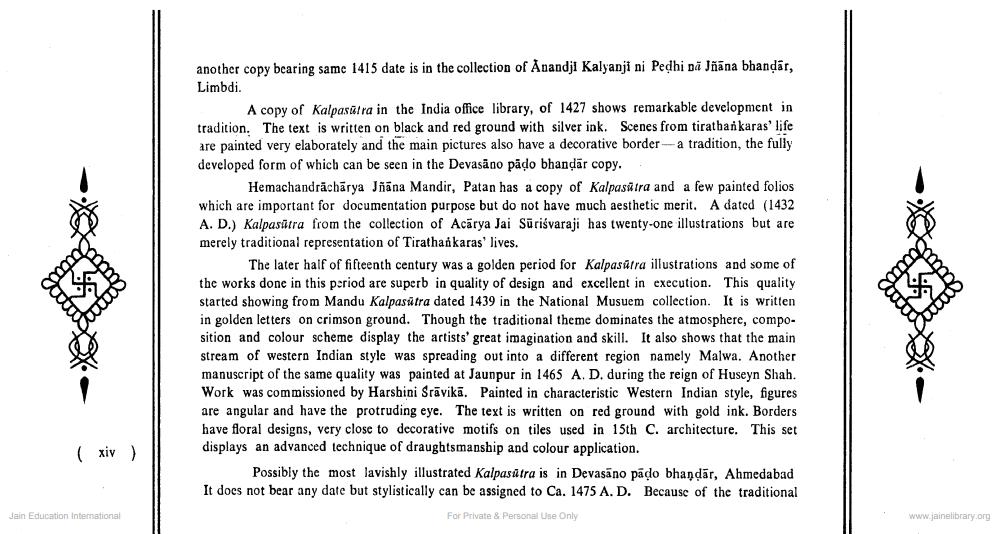________________
( xiv)
Jain Education International
another copy bearing same 1415 date is in the collection of Anandji Kalyanji ni Pedhi na Jñana bhandar,
Limbdi.
A copy of Kalpasutra in the India office library, of 1427 shows remarkable development in tradition. The text is written on black and red ground with silver ink. Scenes from tirathańkaras' life are painted very elaborately and the main pictures also have a decorative border-a tradition, the fully developed form of which can be seen in the Devasano pādo bhanḍār copy.
Hemachandracharya Jñana Mandir, Patan has a copy of Kalpasutra and a few painted folios which are important for documentation purpose but do not have much aesthetic merit. A dated (1432 A. D.) Kalpasūtra from the collection of Acarya Jai Sūriśvaraji has twenty-one illustrations but are merely traditional representation of Tirathankaras' lives.
The later half of fifteenth century was a golden period for Kalpasūtra illustrations and some of the works done in this period are superb in quality of design and excellent in execution. This quality started showing from Mandu Kalpasutra dated 1439 in the National Musuem collection. It is written in golden letters on crimson ground. Though the traditional theme dominates the atmosphere, composition and colour scheme display the artists' great imagination and skill. It also shows that the main stream of western Indian style was spreading out into a different region namely Malwa. Another manuscript of the same quality was painted at Jaunpur in 1465 A. D. during the reign of Huseyn Shah. Work was commissioned by Harshini Sravikā. Painted in characteristic Western Indian style, figures are angular and have the protruding eye. The text is written on red ground with gold ink. Borders have floral designs, very close to decorative motifs on tiles used in 15th C. architecture. This set displays an advanced technique of draughtsmanship and colour application.
Possibly the most lavishly illustrated Kalpasūtra is in Devasãno pãdo bhandar, Ahmedabad It does not bear any date but stylistically can be assigned to Ca. 1475 A. D. Because of the traditional For Private & Personal Use Only
www.jainelibrary.org




